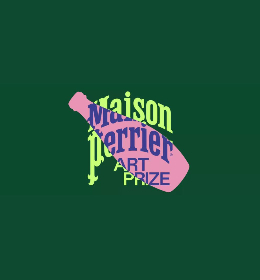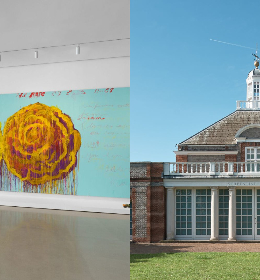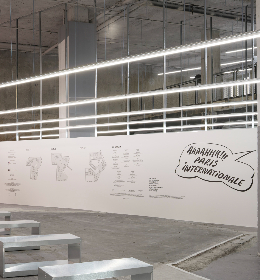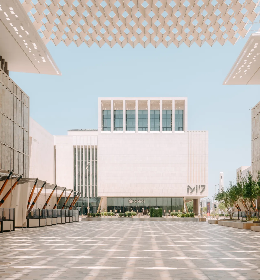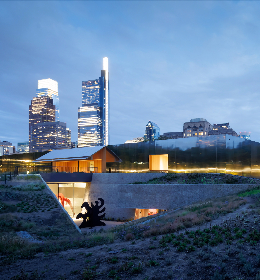He is one of two winners in the series category of Growth. This competition is organized by the British Journal of Photography and includes an exhibition at Galerie Huit Arles for the winners. The gallery was founded in 2007 by Julia de Bierre and is located in a 17th century mansion. This unique setting is a wonderful enhancement to the viewing of Farcasanu’s analogue prints. Founder, Julia de Bierre is an author, curator and heritage-conservationist born in Malaysia and was educated at Bristol University, UK.
“The starting point is that we feel time like there would be no past or future, but only a linear sum of ¨presents¨ that we have a momentary perceptual experience over and over again. Many philosophers agree that our perception is restricted to what is present, which brings us to the conclusion that we can perceive or experience only what is contained in a momentary present. In the 5th century, Augustine of Hippo was one of the first ones to describe time this way, but since then, many other authors both western (Emanuel Kant, Albert Einstein) or oriental (Carl Jung) tried to understand what is time and how we experience it describing it in a similar ‘continuous present’ way,” iterates Farcasanu.

Andrei Farcasanu with his works at Galerie Huit, Arles, photo credit: Valentina Ursache
These small delicately toned photographs, an ongoing series of ‘presents’, beckon us to look more closely at our contemporary context of extended lockdowns, quarantine, and time away from our daily lives; these artworks bring to the forefront a collective consciousness, an emerging eternal present, which we are unable to imagine passing beyond into a past or future. Perhaps, I think, now we are truly ‘living in the present’.
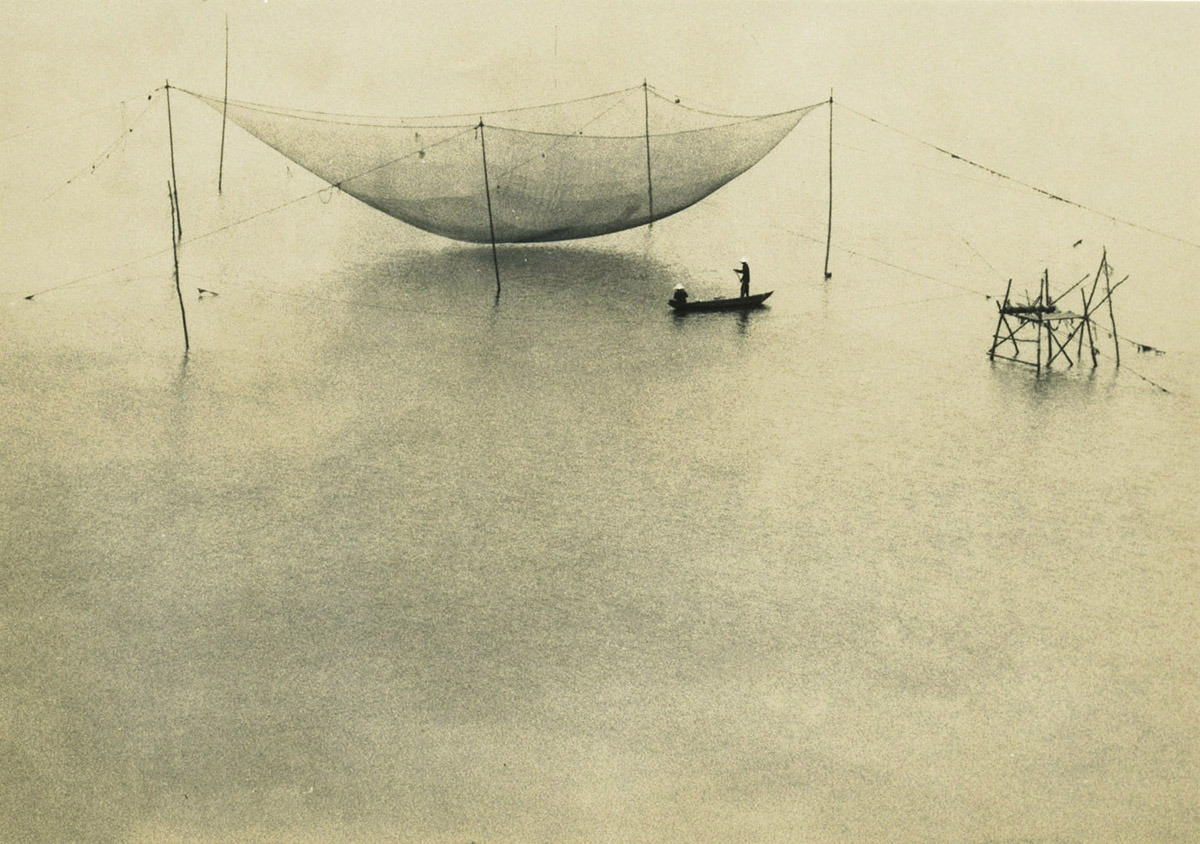
Timeless Interventions #11001, photo credit: Andrei Farcasanu
Farcasanu’s reference to Augustine of Hippo merits its own quotation cited from The Confessions Book XI. (AD 401) Translated by E. B. Pusey (Edward Bouverie), “If an instant of time be conceived, which cannot be divided into the smallest particles of moments, that alone is it, which may be called present. Which yet flies with such speed from future to past, as not to be lengthened out with the least stay. For if it be, it is divided into past and future. The present hath no space.”
Augustine’s conclusion after uncovering the general aspects of the fleeting passage of time is that the present ‘hath no space’, but as we indulge in the present moment of Farcasanu’s photographs, we descend into them as into a liminal space where verisimilitude prevails; it is as if we are diving, wearing a diving bell, oxygen tank, wetsuit. We traverse into a world of light. Perhaps we have journeyed unknowingly onto another planet, exploring a new landscape as astronauts with the preparedness of mindfulness in meditation. This space is as a planet for the soul. The vastness of the works is emphasized by the comparative scale of the tiny universe he might display within a river, at its edge from an animal’s perspective, from a point somewhere far above; we voyage through a world that is foreign to us in its monotone colors, yet welcoming- a safe zone away from corporality.
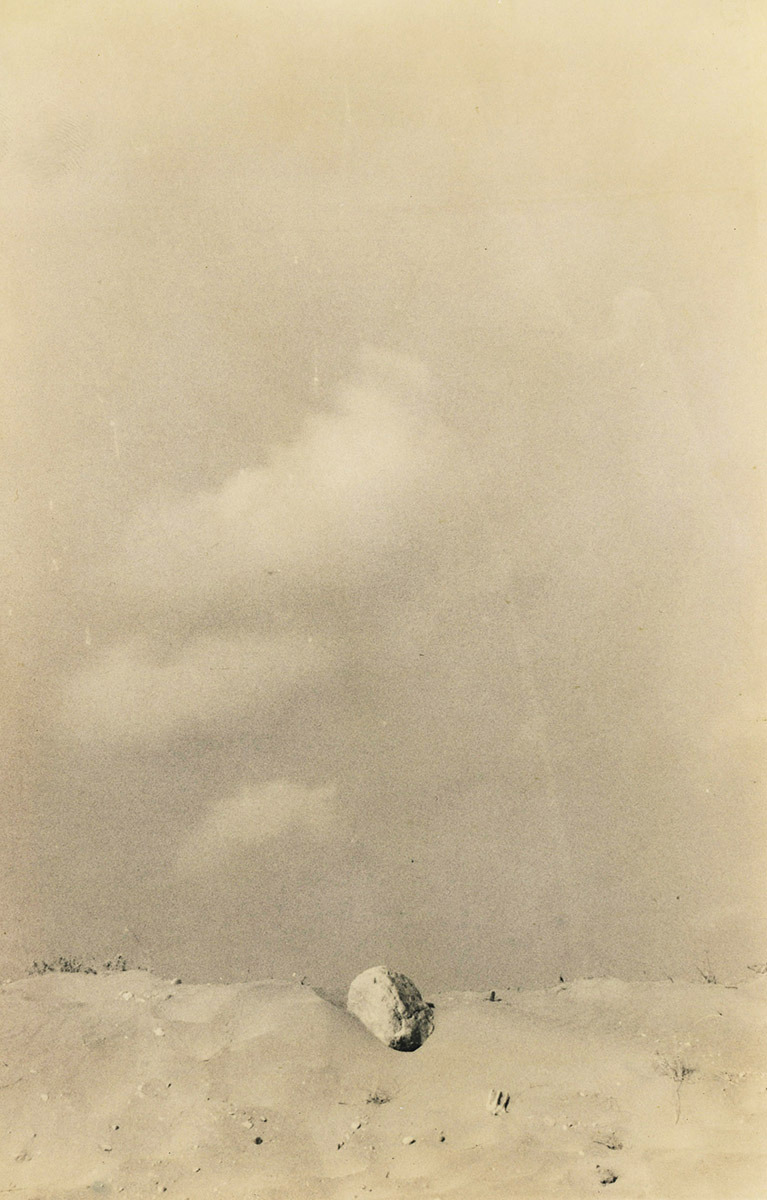
Timeless Interventions #4001, photo credit: Andrei Farcasanu
Farcasanu explains the other worldly quality of his works, “Timeless interventions challenges the main concept of photography itself, as it is known that we perceive photography as a way of freezing the present into still frames that will become memories, witnesses of what has happened already. Instead, with this series I propose photographs that are both still and flowing at the same time. I represent time as some sort of ‘ongoing photographs/stills’ as a conceptual intermediary between abstractness and concreteness where a photograph has neither ‘real time’ nor ‘abstract time’ but has its own time, a dreamy time with its own pace. From this point of view Timeless Interventions scratches also the concept of memory.”
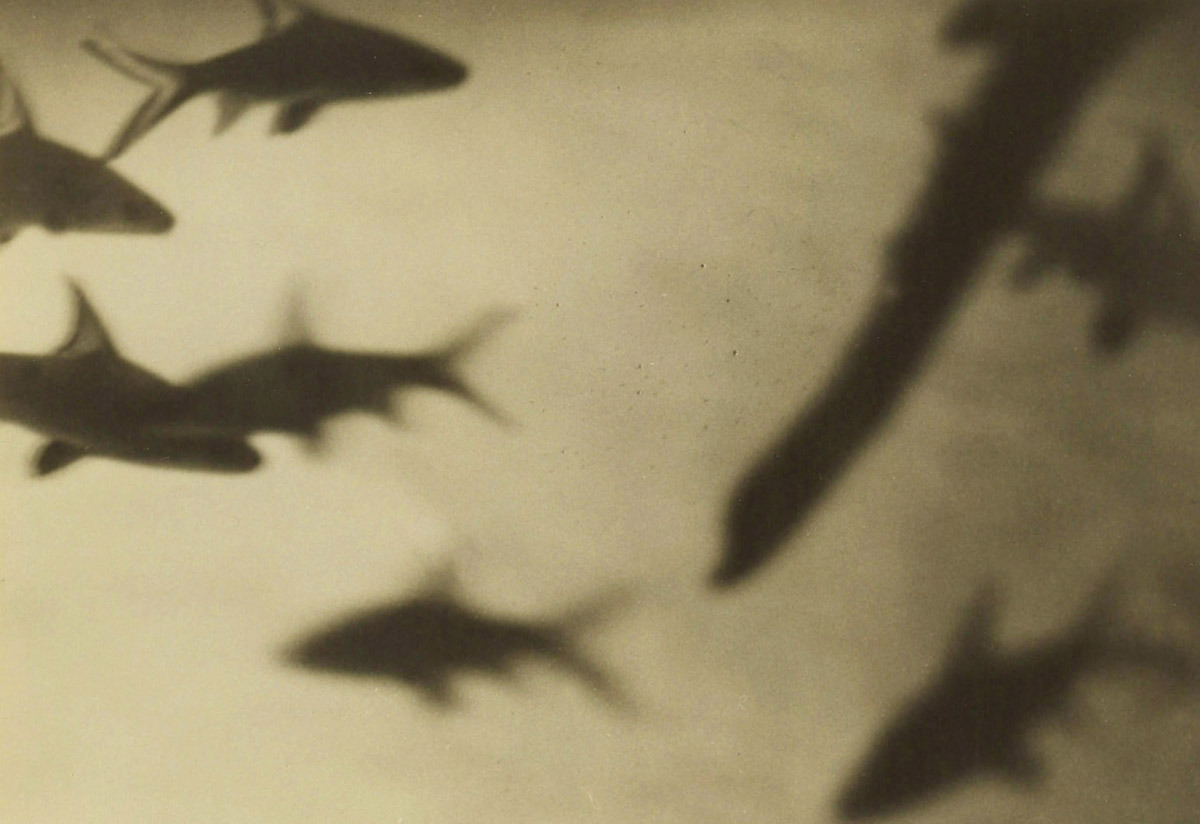
Timeless Interventions #9003, photo credit: Andrei Farcasanu
In observing the works, the qualities are as photographs of the past with their analogue tints from charcoal ashen flames of past lives an umber, burnt just enough to consider shadow. In the past, I have seen him take this lith technique farther in color to the rich iron oxides of the earth, a color tone which I associate with the rich earth of Goa, India contrasting its brilliant flora. These images are as phenomena; they become a rehearsal for the reality of our multicolored world. Farcasanu’s philosophical heritage, born in the shared space of history between the East and West we know in contemporary times as Romania, is demonstrated through a graceful balance between the distinction of capitalist individualism of the west, producing unique and individually printed images made by his loving hands, and the ethereal emphasis on the connection to nature and loss of self of the east. He works as if immersing himself into a stream of life- as if to be on the open water or a leaf on a pond, as a single boat in the far off distance- a lone fishermen pulling its weight through the water. He explains the individual uniqueness emphasized in the physical manifestation of the work, “… I take care of what paper finish to use for each image, what texture it should have, in what size it should be printed and how it should be shown. An important part of my work consists in matching the image with the medium and finding the proper ‘body’ for the image. Engaging the viewer with the physical object is crucial.”
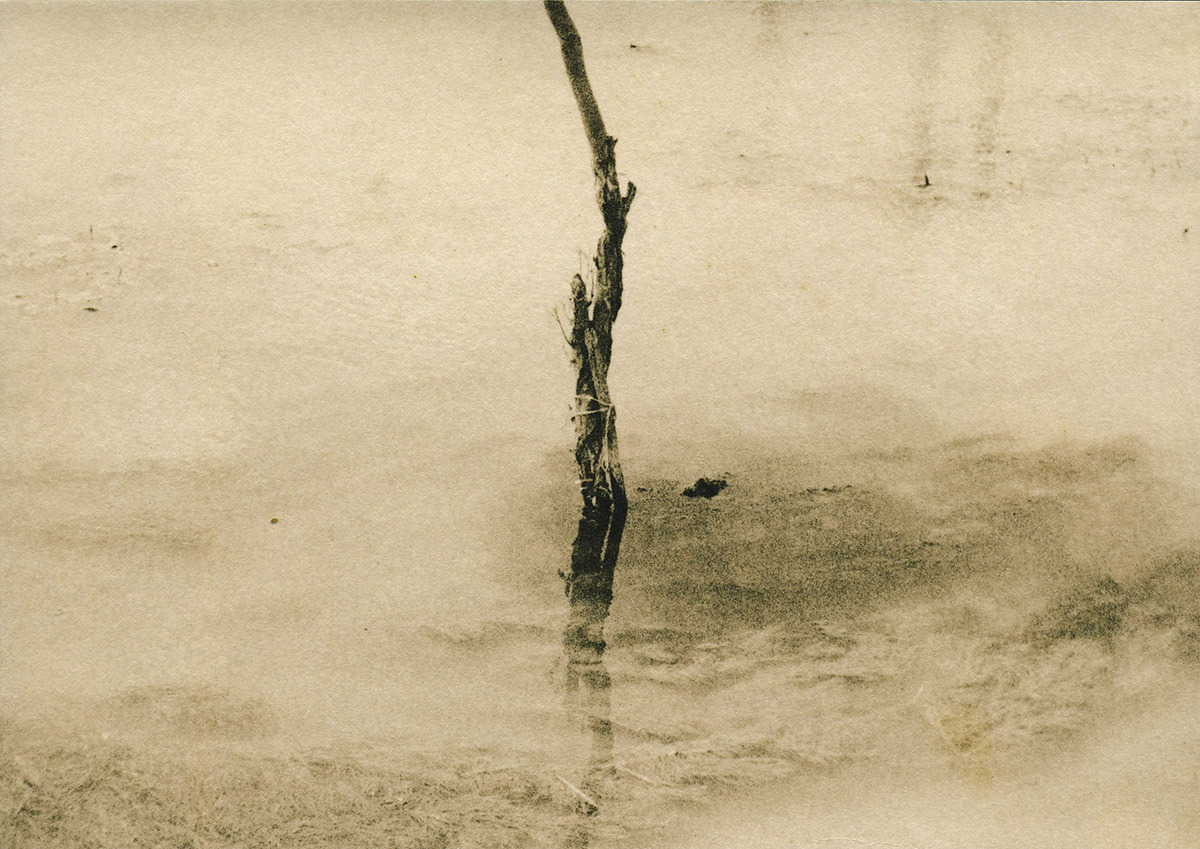
Timeless Interventions #10016, photo credit: Andrei Farcasanu
The ethereal and open composition of his works as well as the link to spaces that we are both familiar with and mystified by, constitute the eastern philosophies from which he takes his inspiration. He explains his art historical influences,” My inspiration can be traced back to paintings- Impressionism and Expressionism - as I was fortunate to study not only painting and graphic arts, but also East-European art and philosophy – a mix of western and oriental views about life. I have been inspired by both the masters of the western pictorial photography (late 19th - early 20th centuries) and the unique style of Andrei Tarkovsky’s metaphysical movies and photography, which definitely influenced me into pursuing motifs like time, dreams and quietness.”
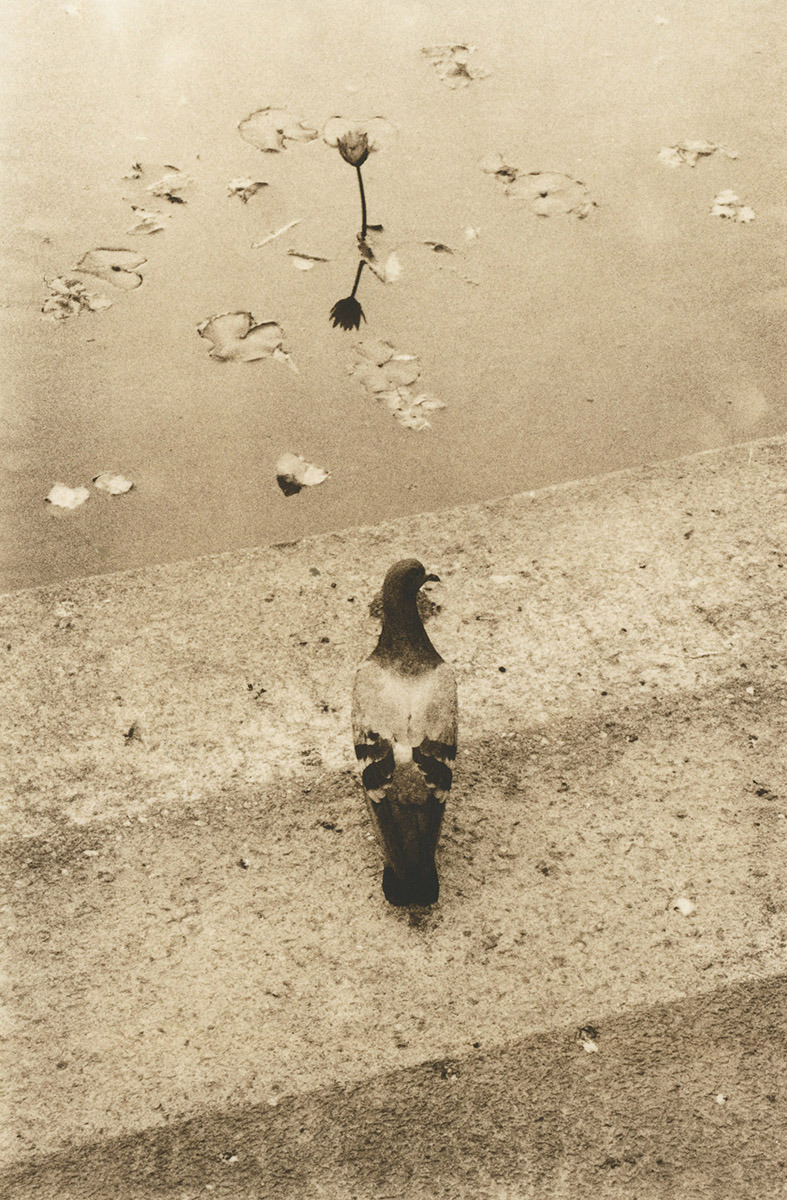
Timeless Interventions #9001, photo credit: Andrei Farcasanu
I ask how he connects with reality, what is the importance of it in his work as a photographer, Farcasanu responds, “I find no reason to mirror reality, but instead I allow myself to get soaked into it, filter it through my own personality and breathing it out results in a unique mix of both my exterior and inner world. The places, spaces and objects represent a moment of awareness of the feeling given, at the level of perception, by that moment, space, light or ambience. It is a form of knowledge, of investigation, a visual poetry of the natural and the quiet universe of life.” His work reminds me of the presence illustrated by artists such as Marina Abramovic, who has worked with not only performance, but photography as well. Her long heralded work, The Artist is Present, is a validation of the role of the artist in society taking an active seat in a state of being present to the moment, aware, listening, receiving, synthesizing, and creating.
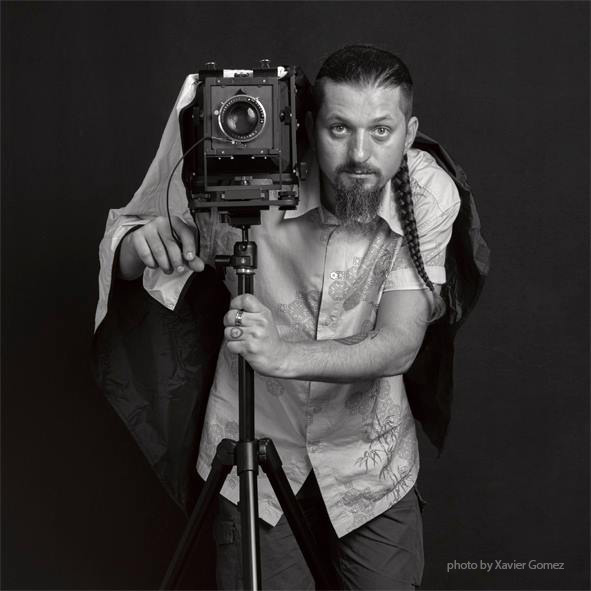
Portrait of Andrei Farcasanu, photo credit: Xavier Gomez
Farcasanu describes this action of presence marvelously, “At the moment of pressing the button I see myself more like a participant rather than a witness. I experience a certain complicity with both the ‘seen’ and the ‘unseen’ that lies before my eyes. Therefore many times I organize and categorize the photos by series only later.” Farcasanu’s Timeless Interventions’ series will still be on view at Galerie Huit through September 27th, 2020 and can also be seen online. If you can get there, it is well worth it to see the works in person.
Anne Murray





